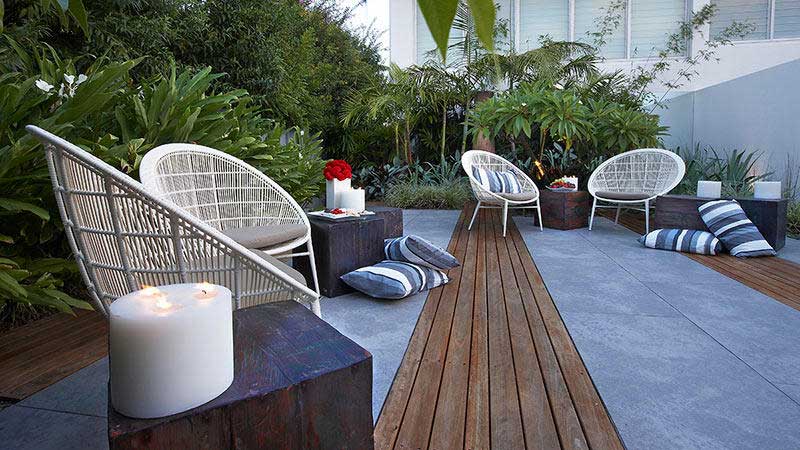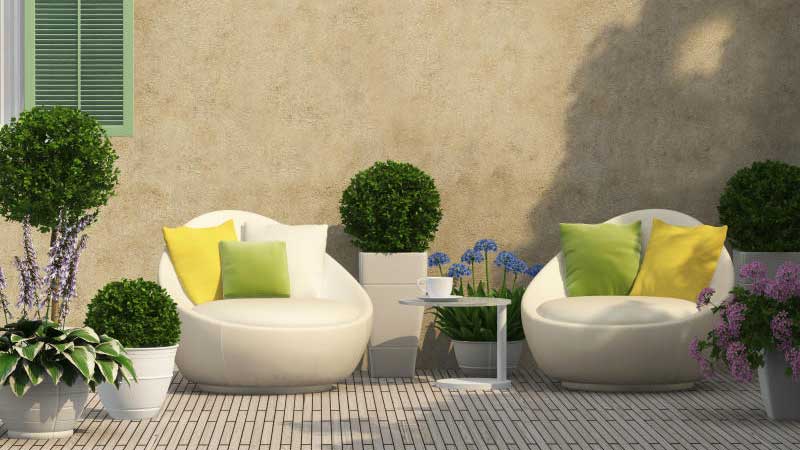
The typical urban garden site is a rectangular box with an open top. Walls or fences commonly enclose the ‘box’ on three sides while the house itself forms the fourth side.
This creates a space that is inward and self-focused. Views and contact with the nearby environment are limited, as is the size. Here are some tips to help you make the most of your urban garden space.
Sub-spaces
An urban garden site should be divided into sub-spaces to provide spatial and visual interest. This is typically a necessity to relieve the monotony created by the existing simplicity of the box-like space. Spatial subdivision can be created by a combination of techniques.
You can start by organising the site for different outdoor uses. Functions such as entertaining, sitting, eating and reading that can fit within the garden area should each be given their own space. Such spaces should than be defined by use of plant materials, walls/fences, or even low earth mounds,
On the ground, different pavement materials can be employed to give each space its own character and identity. Grade changes between individual spaces also help to subtly separate spaces. Collectively, these techniques create multiple subspaces within the framework of the perimeter garden walls, just as furniture, room dividers, house plants, rugs, and so on do in interior rooms.

Perception of size
Try to increase the perceived size of the urban garden site. One way to achieve this is through the use of forced perspective. This is done by progressively converging the edges of spaces as they extend farther away from the house.
This will give a greater sense of depth and distance to the spaces as viewed from inside or near the house. A similar approach is to make the spaces located near the house comparatively large while making other spaces progressively smaller farther away from the house.
Material colours and textures can also establish forced perspective by contrasting materials that are coarse textured and/or bright coloured near the house, and materials that are fine textured and/or light hued at the back end of the space
Overhead planes
Overhead planes should be strategically located throughout an urban garden in coordination with the other elements of the design. This is critical especially where privacy is an issue.
A tree canopy, pergola, canvas awning, or other covering should be located over frequently used spaces in an urban garden to screen upper-storey views and provide a ceiling. They also create shade and make the outdoor rooms more comfortable.
Stay informed. Subscribe to our newsletter
- The writer is a landscape architect
 The Standard Group Plc is a
multi-media organization with investments in media platforms spanning newspaper
print operations, television, radio broadcasting, digital and online services. The
Standard Group is recognized as a leading multi-media house in Kenya with a key
influence in matters of national and international interest.
The Standard Group Plc is a
multi-media organization with investments in media platforms spanning newspaper
print operations, television, radio broadcasting, digital and online services. The
Standard Group is recognized as a leading multi-media house in Kenya with a key
influence in matters of national and international interest.
 The Standard Group Plc is a
multi-media organization with investments in media platforms spanning newspaper
print operations, television, radio broadcasting, digital and online services. The
Standard Group is recognized as a leading multi-media house in Kenya with a key
influence in matters of national and international interest.
The Standard Group Plc is a
multi-media organization with investments in media platforms spanning newspaper
print operations, television, radio broadcasting, digital and online services. The
Standard Group is recognized as a leading multi-media house in Kenya with a key
influence in matters of national and international interest.







